In the October 2015 flood, Mary Edna’s steep creekside bank experienced an erosion event which brought down a large water oak (Quercus nigra) leaving a root mound and creating a mud flat below the yard. Instead of employing a hard structure, Celie Dailey–a landscaper, gardener, and native plant enthusiast who works with botanist Richard Porcher–researched and has begun implementing a planting strategy. The following list of perennial species were installed in September atop the bank and on the mud flat. Suppliers included Roots and Shoots Nursery, Legare Farms, and Celie’s personal stock. The October 2016 hurricane brought added erosion and salt water inundation, and almost all the plants survived as they were selected for salt tolerance. Through the winter, Celie’s plan is to use woody cuttings as “live stakes” in the steep cliffside. As well as bank stabilization, a goal of the project is to increase wildlife on the site with the use of native plants, and slowly replace the copious invasive species.
Lonicera sempervirens – Coral honeysuckle (evergreen, full sun)
Gelsemium sempervirens – Yellow jessamine (evergreen, full sun)
Passiflora incarnata – Passionfruit (deciduous, full sun to part sun)
Prunus angustifolia – Chickasaw plum (deciduous, full sun to part shade)
Prunus serotina – Black cherry (deciduous, full sun to part shade)
Ilex glabra – Inkberry (evergreen, full sun to part shade)
Morella cerifera – Wax myrtle (evergreen, full sun to part shade)
Kosteletskya virginica – Saltmarsh mallow (deciduous, full sun)
Schizachyrium scoparium – Little bluestem grass (deciduous, full sun)
Stokesia laevis – Stoke’s aster (evergreen, full sun)
Spartina alterniflora – Smooth cordgrass (deciduous, full sun)
Images from after Hurricane Matthew, October 2016:
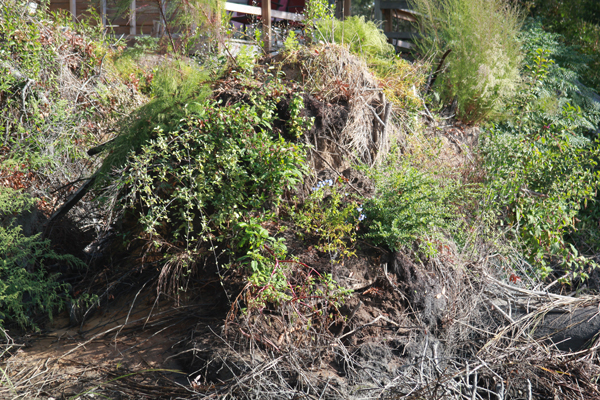
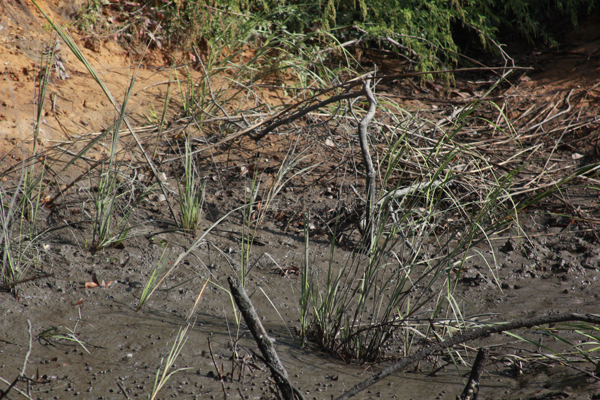
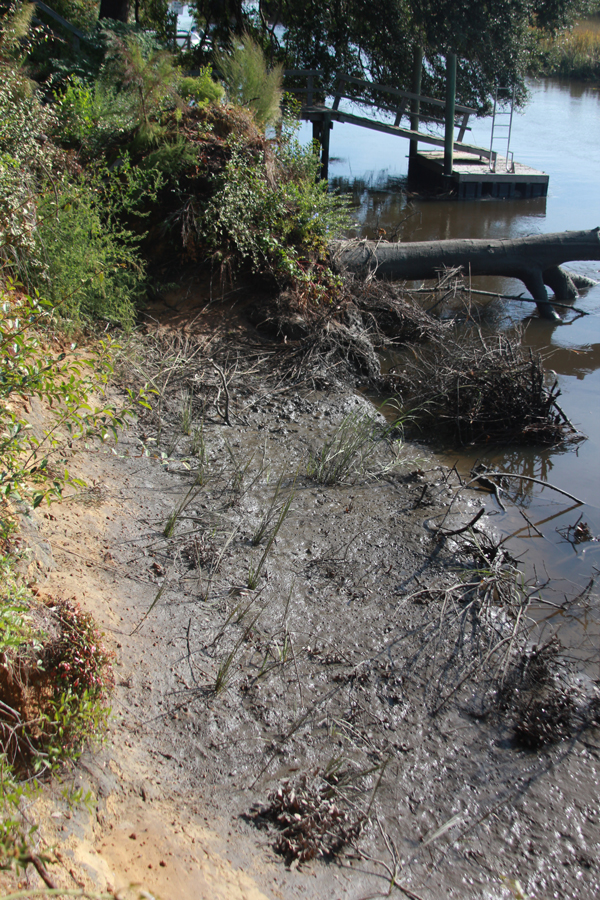
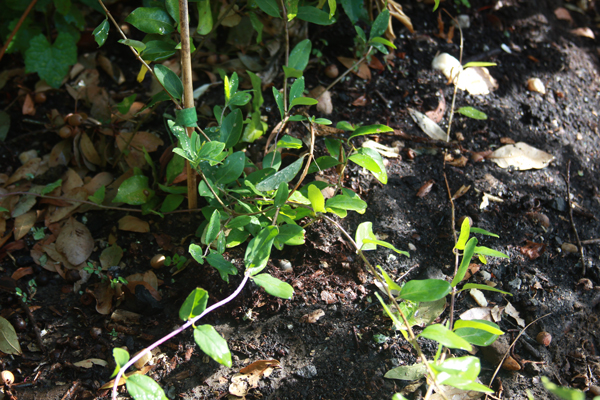
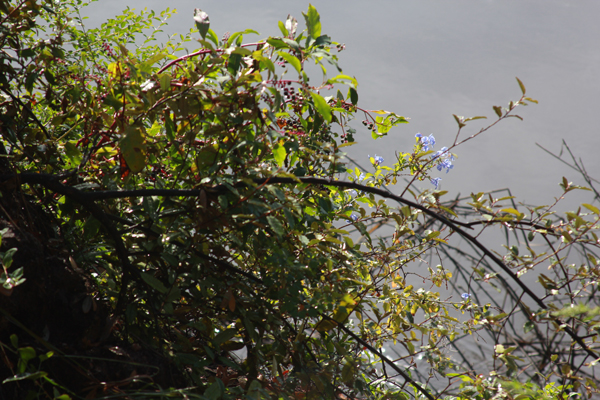
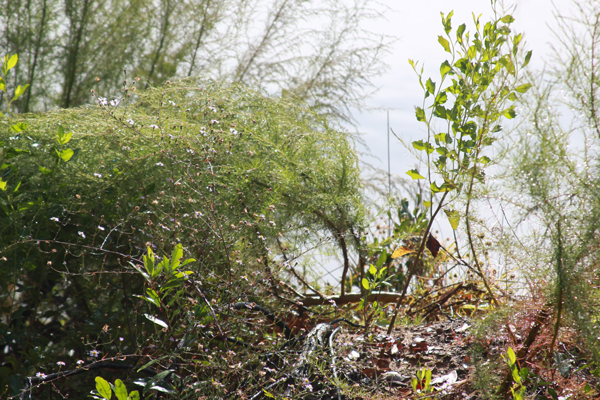
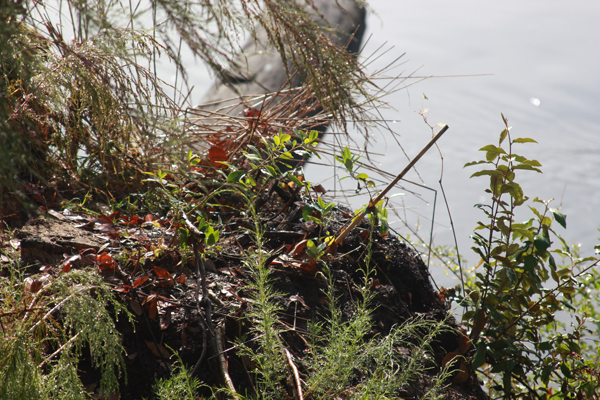
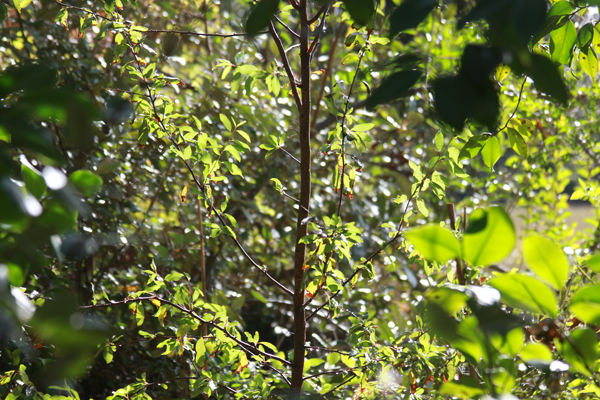
Images from the September 2016 planting:
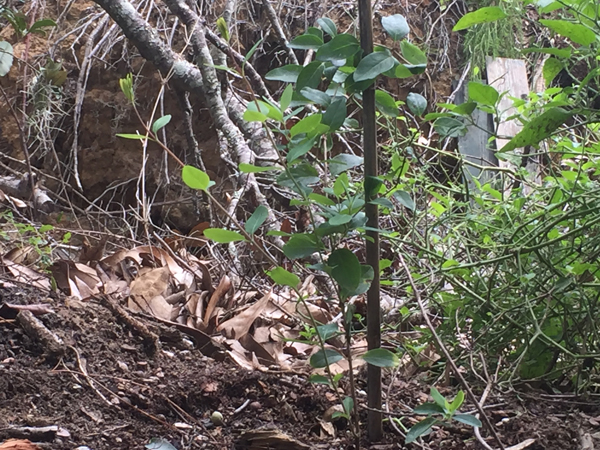
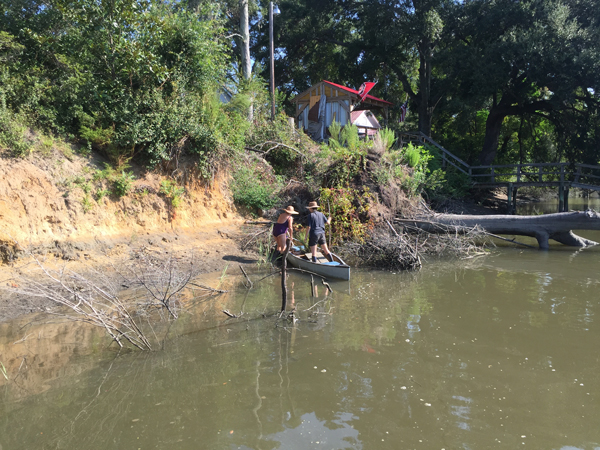
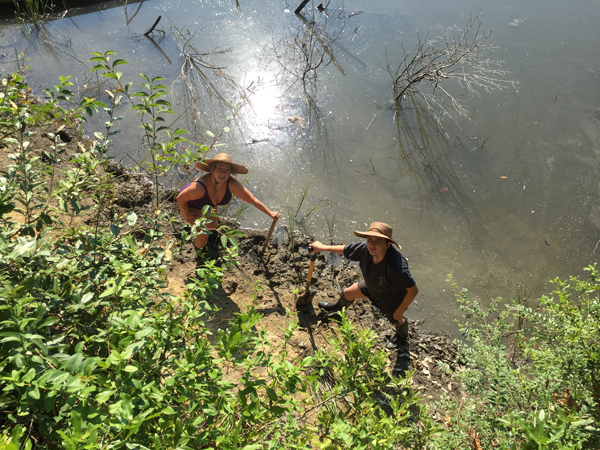
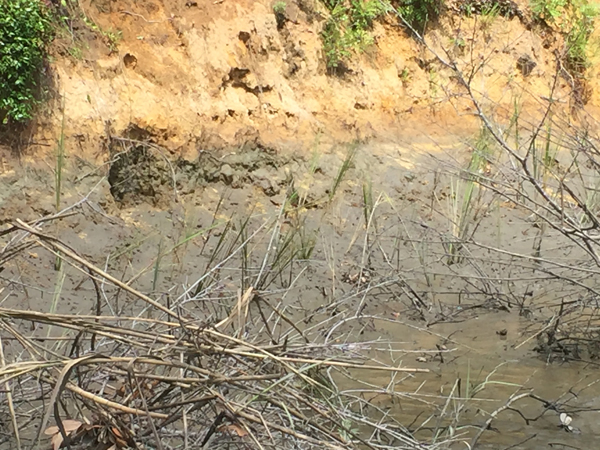
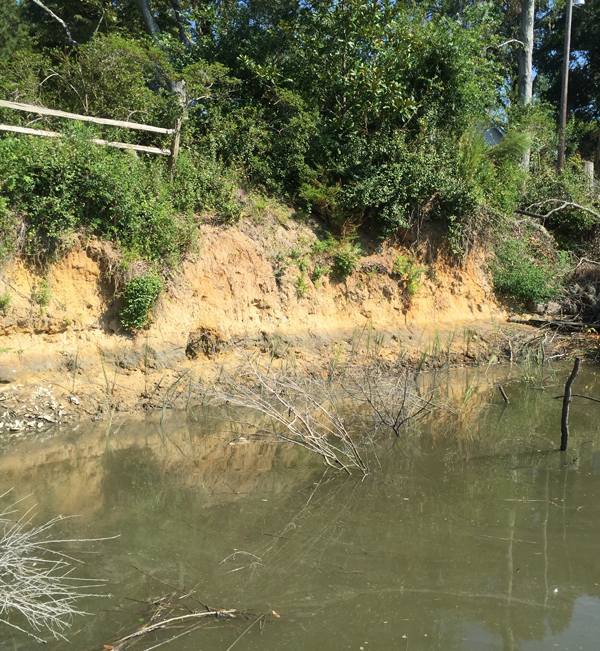

Image of the site after the collapse, October 2015:
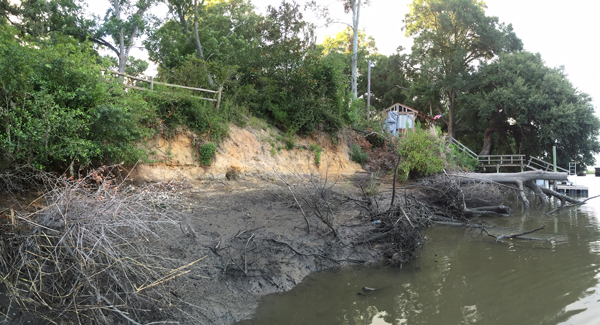
Collapsed bank revegetation project
In the October 2015 flood, Mary Edna’s steep creekside bank experienced an erosion event which brought down a large water oak (Quercus nigra) leaving a root mound and creating a mud flat below the yard. Instead of employing a hard structure, Celie Dailey–a landscaper, gardener, and native plant enthusiast who works with botanist Richard Porcher–researched and has begun implementing a planting strategy. The following list of perennial species were installed in September atop the bank and on the mud flat. Suppliers included Roots and Shoots Nursery, Legare Farms, and Celie’s personal stock. The October 2016 hurricane brought added erosion and salt water inundation, and almost all the plants survived as they were selected for salt tolerance. Through the winter, Celie’s plan is to use woody cuttings as “live stakes” in the steep cliffside. As well as bank stabilization, a goal of the project is to increase wildlife on the site with the use of native plants, and slowly replace the copious invasive species.
Lonicera sempervirens – Coral honeysuckle (evergreen, full sun)
Gelsemium sempervirens – Yellow jessamine (evergreen, full sun)
Passiflora incarnata – Passionfruit (deciduous, full sun to part sun)
Prunus angustifolia – Chickasaw plum (deciduous, full sun to part shade)
Prunus serotina – Black cherry (deciduous, full sun to part shade)
Ilex glabra – Inkberry (evergreen, full sun to part shade)
Morella cerifera – Wax myrtle (evergreen, full sun to part shade)
Kosteletskya virginica – Saltmarsh mallow (deciduous, full sun)
Schizachyrium scoparium – Little bluestem grass (deciduous, full sun)
Stokesia laevis – Stoke’s aster (evergreen, full sun)
Spartina alterniflora – Smooth cordgrass (deciduous, full sun)
Images from after Hurricane Matthew, October 2016:















Images from the September 2016 planting:
Image of the site after the collapse, October 2015: